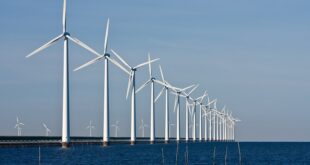The International Energy Agency (IEA) announced that it expected global oil demand to peak at the end of the decade earlier this month. Meanwhile, the Organisation of the Petroleum Exporting Countries (OPEC) said oil demand could reach 110 bpd by 2045, above the peak IEA estimate. But if these major international agencies cannot get on the same page, how can there be a clear fossil fuel outlook?
Earlier in June, the IEA stated that it believed peak oil demand was “in sight” and could be achieved before 2030. Despite a rebound in global energy demand since the Covid pandemic, the rise in renewable energy capacity and acceleration of the green transition is expected to lead to a steady decline in growth for fossil fuels, particularly coal and oil. Concerns over energy security due to last year’s shortages, as well as a global economic crisis, are expected to contribute to this waning demand, as governments pump funding into long-term energy security via the green energy sector.
Fatih Birol, the IEA’s executive director, stated “The shift to a clean energy economy is picking up pace, with a peak in global oil demand in sight before the end of this decade as electric vehicles, energy efficiency and other technologies advance.” Global oil demand is expected to increase by 2.4 million bpd this year to a record 102.3 million bpd, according to the IEA. This growth could fall to 860,000 bpd in 2024 and 400,000 bpd by 2028, to a total global demand of 105.7 million bpd.
The IEA suggested this dip in growth was largely owing to the Russian invasion of Ukraine, which threatened energy security and led to a shortage of fossil fuels last year, as well as the $2 trillion earmarked for clean energy projects by the end of the decade. It expects the global demand for oil from combustible fossil fuels, not including biofuels, petrochemical feedstocks and other non-energy uses, will peak at 81.6 million bpd in 2028.
While the IEA expects the global oil demand for transport to fall after 2026, it is the petrochemicals sector that will continue to keep oil demand high. The organisation expects the growth of the electric vehicle (EV) market to support a transition away from fossil fuel-powered cars, which will be further supported by government and local climate policies. However, “burgeoning petrochemical demand and strong consumption growth in emerging and developing economies will more than offset a contraction in advanced economies”, according to the group.
Meanwhile, OPEC believes global oil demand will rise to as high as 110 million bpd by 2045, increasing the world’s oil demand by 23% from now. Haitham Al Ghais, the Secretary General of OPEC, statedthat ″Oil is irreplaceable for the foreseeable future” during the inaugural Energy Asia conference this month. Al Ghais suggested that in two decades, oil will still comprise around 29 percent of the global energy mix.
This outlook is contradictory to the IEA’s global oil demand prediction. Al Ghais also suggested that a lack of investment in the oil industry will not stop this growth in demand, but it could lead to “energy chaos”. He expects rapid urbanisation to contribute significantly to the rise in oil demand worldwide. However, the Secretary-General does acknowledge the growing role that renewables will have in the global energy mix, suggesting that OPEC member states are already investing substantially in green energy. As well as oil, he expects natural gas, hydrogen, nuclear power, hydrogen, and biomass to also expand.
By the end of last year, the global renewable energy generation capacity totalled 3372 GW, marking a growth of 295 GW, or 9.6 percent. Around 83 percent of all power capacity added in 2022 was produced by renewable sources. The sector is continuing to grow at record levels thanks to cohesion across several state governments and the launch of climate policies supporting an accelerated green transition. This has led to a downward trend in fossil fuel power generation, as well as a diversification of energy investment, even by some of the world’s biggest oil and gas majors.
The International Renewable Energy Agency (IRENA) Director-General Francesco La Camera stated: “This continued record growth shows the resilience of renewable energy amidst the lingering energy crisis.” Camera added, “The strong business case of renewables coupled with enabling policies has sustained an upward trend of their share in the global energy mix year on year. But annual additions of renewable power capacity must grow three times the current level by 2030 if we want to stay on a pathway limiting global warming to 1.5°C.”
However, much of the renewable energy capacity growth is happening in a select few countries, mainly concentrated within some of the world’s strongest economies and regions, including Asia, Europe, and the USA. To ensure that the global renewable energy capacity continues to grow at this rate, the world’s developed economies need to invest in poorer regions, to meet the growing demand for clean energy. If this does not happen, it could lead to the OPEC prediction of long-term oil demand growth being accurate. While the optimistic IEA forecast could be correct if the global renewable energy capacity continues to grow at a rapid rate, any slowing of this could lead to a more pessimistic outcome.

 Iran Energy News Oil, Gas, Petrochemical and Energy Field Specialized Channel
Iran Energy News Oil, Gas, Petrochemical and Energy Field Specialized Channel



